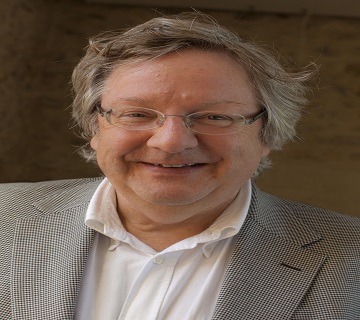Scientific Program

Peter Klosse
Professor, Hotel Management School Maastricht, Netherlands
Title: Taste as a tool: The mouthfeel model
Biography:
Peter Klosse has over thirty years of experience in gastronomy. He is active as an entrepreneur and as an academic. He owns five star Hotel and Restaurant De Echoput, near Apeldoorn and the Academie voor Gastronomie, a training institute for chefs and sommeliers. As an academic, he developed a new flavor theory, which evolved in a PhD. He is the Professor of Gastronomy and researches and teaches gastronomy at the Hotel Management School Maastricht. Recently he founded T.A.S.T.E. to initiate the measurement of taste. Peter Klosse is member of the Google Food Lab and a number of advisory boards.
Abstract
Tasting usually refers to neural systems that register taste. The “basic taste proposition” is a relatively subjective concept, as the subject (usually human) does the tasting. We propose to focus on the product side that can be assessed more objectively. Food and beverages comprise a particular configuration of water, proteins, fats and carbohydrates: or rather a composition of molecules that we know much about and that can be measured and quantified. Acidity, bitter, salts, sweet and umami impact taste. Although all these aspects taste very different, but they also have something in common: they all have some kind of ‘mouthfeel’. We distinguish ‘contracting’, ‘coating’ and ‘drying’ as three classes of mouthfeel. These classes have different intensities. Ingredients within the same group are likely to enhance its intensity. Between classes there is likely to be suppression, or masking. Mouthfeel and intensity are the parameters of a model that can be used to classify foods and beverages. This classification can be used i.e. in food and beverage pairing and the composition and improvement of dishes. We aim to progress in quantifying the model and measuring mouthfeel as a primary indicator. Ultimately, each food and beverage should find a coordinate that defines its mouthfeel. This approach is supposed to give better insights in liking as taste becomes a tool to connect foods and beverages to the preferences of people. In our keynote and workshop we’d like to explain and illustrate this innovative and invigorative approach. It would be premiere.
- Food Microbiology
- Food Contamination and Spoilage
- Risk Assessment and Risk Management
- Foodborne Pathogens and Food Poisoning
- Brewing technology and Oenology
- Food Safety and Preservation
- Probiotics and Prebiotics
- Microbiology of Fermented Foods and Beverages
- Single Cell Protein

